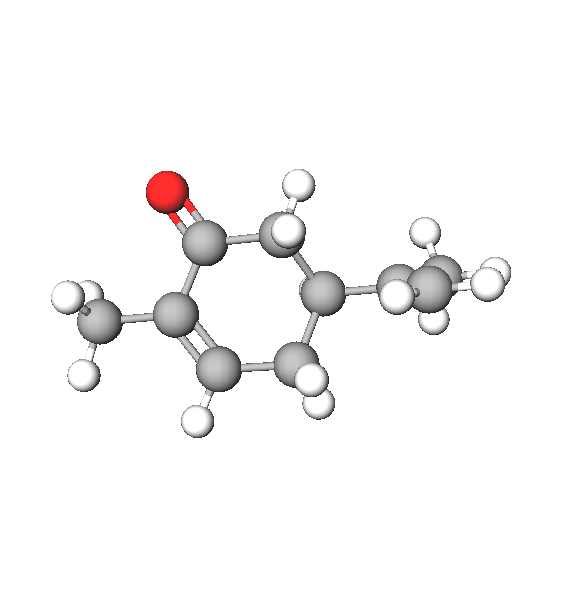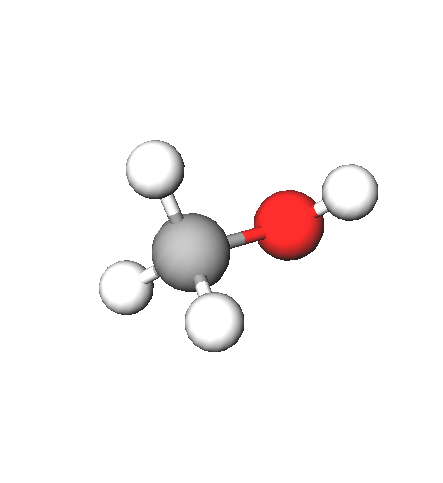Vocabulary III
- Page ID
- 48122
\( \newcommand{\vecs}[1]{\overset { \scriptstyle \rightharpoonup} {\mathbf{#1}} } \)
\( \newcommand{\vecd}[1]{\overset{-\!-\!\rightharpoonup}{\vphantom{a}\smash {#1}}} \)
\( \newcommand{\dsum}{\displaystyle\sum\limits} \)
\( \newcommand{\dint}{\displaystyle\int\limits} \)
\( \newcommand{\dlim}{\displaystyle\lim\limits} \)
\( \newcommand{\id}{\mathrm{id}}\) \( \newcommand{\Span}{\mathrm{span}}\)
( \newcommand{\kernel}{\mathrm{null}\,}\) \( \newcommand{\range}{\mathrm{range}\,}\)
\( \newcommand{\RealPart}{\mathrm{Re}}\) \( \newcommand{\ImaginaryPart}{\mathrm{Im}}\)
\( \newcommand{\Argument}{\mathrm{Arg}}\) \( \newcommand{\norm}[1]{\| #1 \|}\)
\( \newcommand{\inner}[2]{\langle #1, #2 \rangle}\)
\( \newcommand{\Span}{\mathrm{span}}\)
\( \newcommand{\id}{\mathrm{id}}\)
\( \newcommand{\Span}{\mathrm{span}}\)
\( \newcommand{\kernel}{\mathrm{null}\,}\)
\( \newcommand{\range}{\mathrm{range}\,}\)
\( \newcommand{\RealPart}{\mathrm{Re}}\)
\( \newcommand{\ImaginaryPart}{\mathrm{Im}}\)
\( \newcommand{\Argument}{\mathrm{Arg}}\)
\( \newcommand{\norm}[1]{\| #1 \|}\)
\( \newcommand{\inner}[2]{\langle #1, #2 \rangle}\)
\( \newcommand{\Span}{\mathrm{span}}\) \( \newcommand{\AA}{\unicode[.8,0]{x212B}}\)
\( \newcommand{\vectorA}[1]{\vec{#1}} % arrow\)
\( \newcommand{\vectorAt}[1]{\vec{\text{#1}}} % arrow\)
\( \newcommand{\vectorB}[1]{\overset { \scriptstyle \rightharpoonup} {\mathbf{#1}} } \)
\( \newcommand{\vectorC}[1]{\textbf{#1}} \)
\( \newcommand{\vectorD}[1]{\overrightarrow{#1}} \)
\( \newcommand{\vectorDt}[1]{\overrightarrow{\text{#1}}} \)
\( \newcommand{\vectE}[1]{\overset{-\!-\!\rightharpoonup}{\vphantom{a}\smash{\mathbf {#1}}}} \)
\( \newcommand{\vecs}[1]{\overset { \scriptstyle \rightharpoonup} {\mathbf{#1}} } \)
\( \newcommand{\vecd}[1]{\overset{-\!-\!\rightharpoonup}{\vphantom{a}\smash {#1}}} \)
\(\newcommand{\avec}{\mathbf a}\) \(\newcommand{\bvec}{\mathbf b}\) \(\newcommand{\cvec}{\mathbf c}\) \(\newcommand{\dvec}{\mathbf d}\) \(\newcommand{\dtil}{\widetilde{\mathbf d}}\) \(\newcommand{\evec}{\mathbf e}\) \(\newcommand{\fvec}{\mathbf f}\) \(\newcommand{\nvec}{\mathbf n}\) \(\newcommand{\pvec}{\mathbf p}\) \(\newcommand{\qvec}{\mathbf q}\) \(\newcommand{\svec}{\mathbf s}\) \(\newcommand{\tvec}{\mathbf t}\) \(\newcommand{\uvec}{\mathbf u}\) \(\newcommand{\vvec}{\mathbf v}\) \(\newcommand{\wvec}{\mathbf w}\) \(\newcommand{\xvec}{\mathbf x}\) \(\newcommand{\yvec}{\mathbf y}\) \(\newcommand{\zvec}{\mathbf z}\) \(\newcommand{\rvec}{\mathbf r}\) \(\newcommand{\mvec}{\mathbf m}\) \(\newcommand{\zerovec}{\mathbf 0}\) \(\newcommand{\onevec}{\mathbf 1}\) \(\newcommand{\real}{\mathbb R}\) \(\newcommand{\twovec}[2]{\left[\begin{array}{r}#1 \\ #2 \end{array}\right]}\) \(\newcommand{\ctwovec}[2]{\left[\begin{array}{c}#1 \\ #2 \end{array}\right]}\) \(\newcommand{\threevec}[3]{\left[\begin{array}{r}#1 \\ #2 \\ #3 \end{array}\right]}\) \(\newcommand{\cthreevec}[3]{\left[\begin{array}{c}#1 \\ #2 \\ #3 \end{array}\right]}\) \(\newcommand{\fourvec}[4]{\left[\begin{array}{r}#1 \\ #2 \\ #3 \\ #4 \end{array}\right]}\) \(\newcommand{\cfourvec}[4]{\left[\begin{array}{c}#1 \\ #2 \\ #3 \\ #4 \end{array}\right]}\) \(\newcommand{\fivevec}[5]{\left[\begin{array}{r}#1 \\ #2 \\ #3 \\ #4 \\ #5 \\ \end{array}\right]}\) \(\newcommand{\cfivevec}[5]{\left[\begin{array}{c}#1 \\ #2 \\ #3 \\ #4 \\ #5 \\ \end{array}\right]}\) \(\newcommand{\mattwo}[4]{\left[\begin{array}{rr}#1 \amp #2 \\ #3 \amp #4 \\ \end{array}\right]}\) \(\newcommand{\laspan}[1]{\text{Span}\{#1\}}\) \(\newcommand{\bcal}{\cal B}\) \(\newcommand{\ccal}{\cal C}\) \(\newcommand{\scal}{\cal S}\) \(\newcommand{\wcal}{\cal W}\) \(\newcommand{\ecal}{\cal E}\) \(\newcommand{\coords}[2]{\left\{#1\right\}_{#2}}\) \(\newcommand{\gray}[1]{\color{gray}{#1}}\) \(\newcommand{\lgray}[1]{\color{lightgray}{#1}}\) \(\newcommand{\rank}{\operatorname{rank}}\) \(\newcommand{\row}{\text{Row}}\) \(\newcommand{\col}{\text{Col}}\) \(\renewcommand{\row}{\text{Row}}\) \(\newcommand{\nul}{\text{Nul}}\) \(\newcommand{\var}{\text{Var}}\) \(\newcommand{\corr}{\text{corr}}\) \(\newcommand{\len}[1]{\left|#1\right|}\) \(\newcommand{\bbar}{\overline{\bvec}}\) \(\newcommand{\bhat}{\widehat{\bvec}}\) \(\newcommand{\bperp}{\bvec^\perp}\) \(\newcommand{\xhat}{\widehat{\xvec}}\) \(\newcommand{\vhat}{\widehat{\vvec}}\) \(\newcommand{\uhat}{\widehat{\uvec}}\) \(\newcommand{\what}{\widehat{\wvec}}\) \(\newcommand{\Sighat}{\widehat{\Sigma}}\) \(\newcommand{\lt}{<}\) \(\newcommand{\gt}{>}\) \(\newcommand{\amp}{&}\) \(\definecolor{fillinmathshade}{gray}{0.9}\)Global Warming & Your Carbon Footprint
Using the Reading Resources, incorporate answers to the questions which follow them into a clearly written, grammatically correct essay, free of spelling errors, that is organized with a minimum of 3 paragraphs: an introductory paragraph defining global warming, a main paragraph describing the role that carbon and CO2 play in global warming, and a closing paragraph that provides your role in contributing to and mitigating global warming.
There can be more than 3 paragraphs. The essay is to address all of the 20 guiding questions. The essay’s word count must be in the range of 250-500 words. If any of the essay is plagiarized, it will result in a failing grade.
Reading Resources
A) Plagiarism
B) Science of global warming:
-
Basics of the Carbon Cycle & the Greenhouse Effect - National Oceanic & Atmospheric Administration (NOAA): Global Greenhouse Gas Reference
URL: http://www.esrl.noaa.gov/gmd/ccgg/basics.html
-
History of atmospheric carbon dioxide from 800,000 years ago until January, 2014. - National Oceanic & Atmospheric Administration (NOAA): Global Greenhouse Gas Reference
URL: http://www.esrl.noaa.gov/gmd/ccgg/trends/history.html
-
Meeting the Climate-Change Challenge: Powerpoint Presentation - SES Distinguished Scientist Seminar Marine Biological Laboratory Woods Hole
URL: http://chemconnections.org/Global%20Warming/Climate-Chg-06.ed-JPL.pdf
-
Mitigation of Climate Change: IPCC Powerpoint Presentation - Mitigating Global Warming
URL: http://chemconnections.org/Global%20...esentation.pdf
-
Why scientists are (almost) certain that climate change is man-made - The Economist, Nov 2nd 2014
URL: http://chemconnections.org/Global%20...0Economist.pdf
-
The science of climate change - The Economist, Nov 28th 2015
URL: http://chemconnections.org/Global%20...0Economist.pdf
-
Three possible future paths for annual global greenhouse gas - Science Magazine: Nov. 2016
URL: http://chemconnections.org/Global%20....2016.full.pdf
-
Short Answers to Hard Questions About Climate Change - New York Times, 2016
URL: http://chemconnections.org/Global%20...rk%20Times.pdf
-
A heated mirror for future climate - Science Magazine: April 2016
URL: http://chemconnections.org/Global%20....2016.full.pdf
-
Scientists Warn of Perilous Climate Shift Within Decades, Not Centuries - New York Times, March 22, 2016
URL: http://chemconnections.org/Global%20...rk%20Times.pdf
-
Failure to address global warming will cost many lives - The Economist, Dec 10th 2015
URL: http://chemconnections.org/Global%20...0Economist.pdf
-
Oceans and climate science - The rise in sea levels may be accelerating The Economist, Jan 17th 2015
URL: http://chemconnections.org/Global%20...0Economist.pdf
-
Rising Sea Levels May Disrupt Lives of Millions - New York Times, March 14, 2016
Guiding Questions
PART I:
1. What is the greenhouse effect?
2. What are the 4 most important greenhouse gases?
3. How can relatively small concentrations of greenhouse gases have such a large impact on global surface temperatures?
4. Not all greenhouse gases contain a carbon atom. Why has carbon been focused on as the leading global warming concern?
5. How much CO2 is presently in the atmosphere?
6. How do we know CO2 in the atmosphere is increasing?
7. How has the amount of CO2 in the atmosphere changed over time in the last 200 years?....... over the past hundreds of thousands of years?
8. How do we know that humans are responsible for the sudden increase in CO2?
9. What is the carbon cycle?
10. Why is burning fossil fuels the main focus of global climate concerns?
11. What are the possible alternative energy resources that can replace fossil fuels, and why is solar energy perhaps the most important among them?
12. How does CO2 relate to: 1) the increase in ocean acidity, 2) to acid-base equilibrium, and 3) to what would happen if the buffering effects in the oceans were to stop?
13. What are the overall concerns if the carbon cycle’s CO2 equilibrium level is not re-set to a lower concentration level?
PART II:
Individually complete the following CoolClmate calculator’s survey, refer to your respective personal and/or household levels relating to the following four areas and then answer the following seven questions.
http://coolclimate.berkeley.edu/calculator
-
What is the carbon footprint in tons of CO2 per year for an average household in the U.S.?
-
What is your personal and/or household carbon footprint in tons of CO2 per year?
What can you do to improve your carbon footprint in relation to
-
Travel?
-
Housing?
-
Food & Diet?
-
Shopping for Goods & Services?
-
What can you do to bring attention to and improve the awareness of carbon & global warming locally?, … in your home?, ...on the DVC campus?, in your community?
Individual Essay Submission
Cut and paste your un-plagiarized essay of 250-500 words having 3 or more paragraphs into your private individual page below on or before midnight December 1st. Be sure to save your drafts off line and cut and paste the final version. Submissions will not be accepted after that time.
Once you have made a final submission, send Dr. R. an e-mail (rrusay@chemconnections.org) advising him that you have done so.
|
|
Evaluations and Assignment Completion
In a reply to your e-mail, Dr. R. will send instructions on evaluating 3 writing samples that you will appraise. They vary in quality. You will be provided a set of questions which serve as a rubrik and guide for you to evaluate the samples, then provide a grade for each. After completing the three evaluations, you will apply the same rubric to your essay, which completes the assignment. This must be completed by December 8th to receive credit.
_______________________
OPTIONAL ARC Group:
You have self organized into groups that were recorded on the Lab check-in roster. Dr. R. will set up your groups’ private wiki page and include e-mail links to your other ARC-group members on it. Log-in will be from your ChemWiki / Libretext account (http://chemwiki.ucdavis.edu; http://chem.libretexts.org/), and the Chem 106 Vocabulary III (private) page, where you will find the link to a working space built exclusively for your Group should you choose to organize one.
Academic Reading Circle (ARC) Group Working Spaces
Global Warming & Your Carbon Footprint ARC-group Working Space: M1, M2, M3, M4, M5, W1, W2, W3, W4, W5
The Global Warming project is a separate assignment from the General Vocabulary I, II, and III
M1-Academic Reading Circle (ARC)
M2-Academic Reading Circle (ARC)
M3-Academic Reading Circle (ARC)
M4-Academic Reading Circle (ARC)
M5-Academic Reading Circle (ARC)
_______________________



.png?revision=1&size=bestfit&width=155&height=160)
-Carvone_(model).png?revision=1&size=bestfit&width=155&height=160)
_(2).png?revision=1&size=bestfit&width=155&height=160)
.png?revision=1&size=bestfit&width=155&height=160)
_(3).png?revision=1&size=bestfit&width=155&height=160)
_(4).png?revision=1&size=bestfit&width=155&height=160)
_(5).png?revision=1&size=bestfit&width=155&height=160)
_(6).png?revision=1&size=bestfit&width=155&height=160)
_(7).png?revision=1&size=bestfit&width=155&height=160)
_(8).png?revision=1&size=bestfit&width=155&height=160)
_(9).png?revision=1&size=bestfit&width=155&height=160)
_(10).png?revision=1&size=bestfit&width=155&height=160)
_(11).png?revision=1&size=bestfit&width=155&height=160)
_(12).png?revision=1&size=bestfit&width=146&height=160)
_(13).png?revision=1&size=bestfit&width=146&height=160)
_(14).png?revision=1&size=bestfit&width=146&height=160)
_(15).png?revision=1&size=bestfit&width=146&height=160)
_(16).png?revision=1&size=bestfit&width=146&height=160)
_(17).png?revision=1&size=bestfit&width=146&height=160)
_(18).png?revision=1&size=bestfit&width=146&height=160)
_(19).png?revision=1&size=bestfit&width=146&height=160)
_(20).png?revision=1&size=bestfit&width=146&height=160)
_(22).png?revision=1&size=bestfit&width=146&height=160)
_(21).png?revision=1&size=bestfit&width=146&height=160)